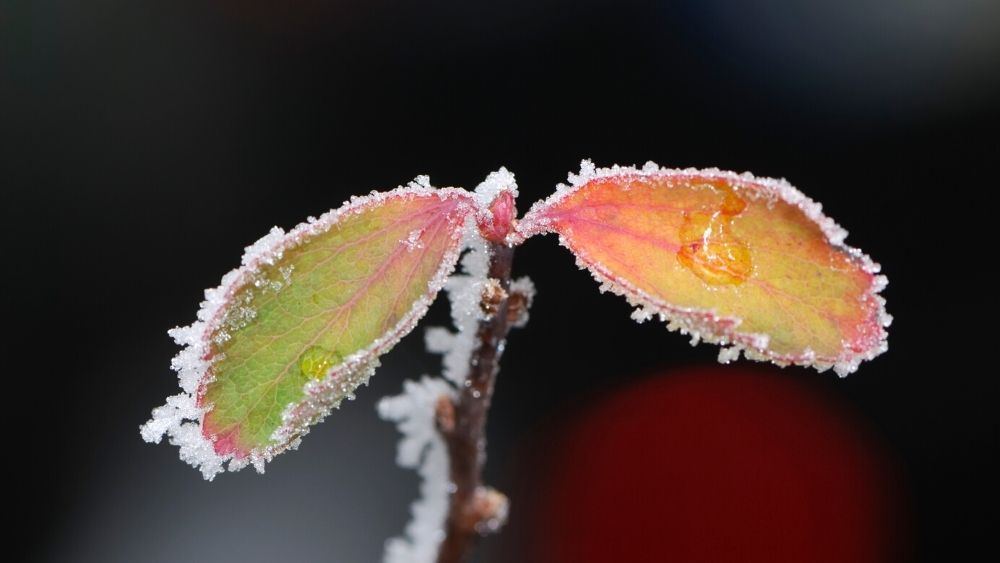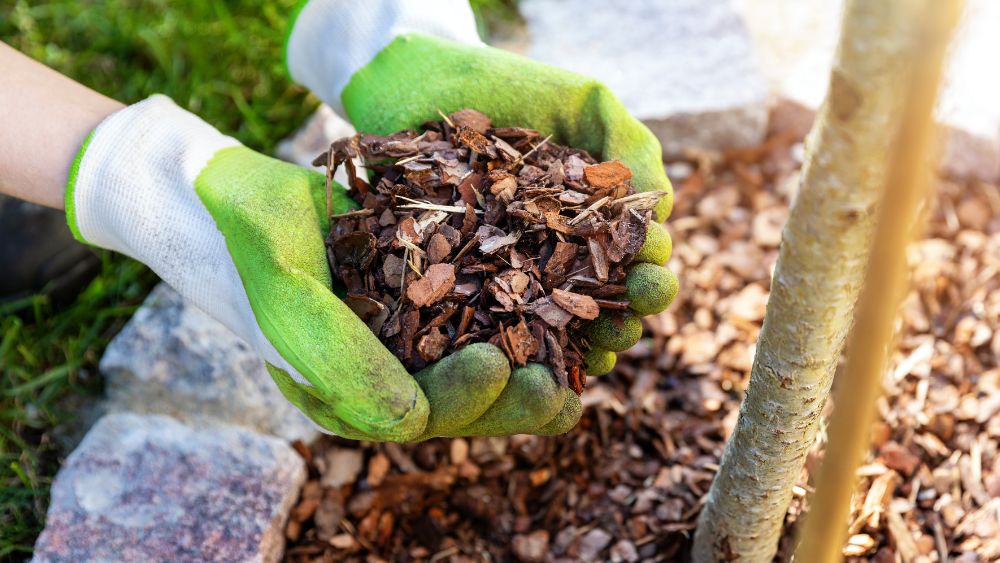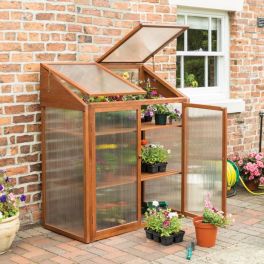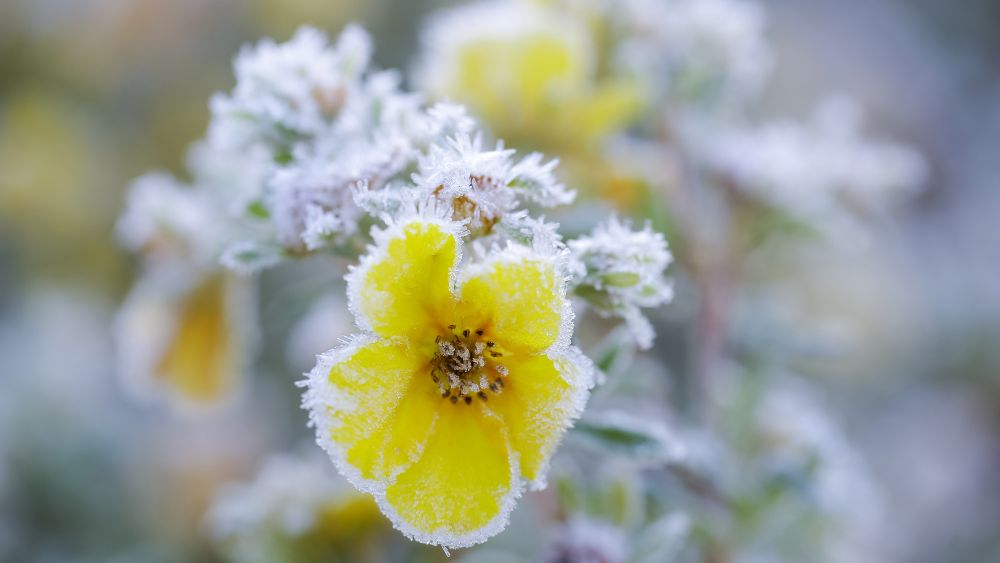We use cookies to make your experience better. To comply with the new e-Privacy directive, we need to ask for your consent to set the cookies. Learn more.
How to Frost-Proof Your Garden in the UK: Hacks, FAQs & Video
- Admin
- Gardeners Diary
- 6 Oct 2021
-
121views
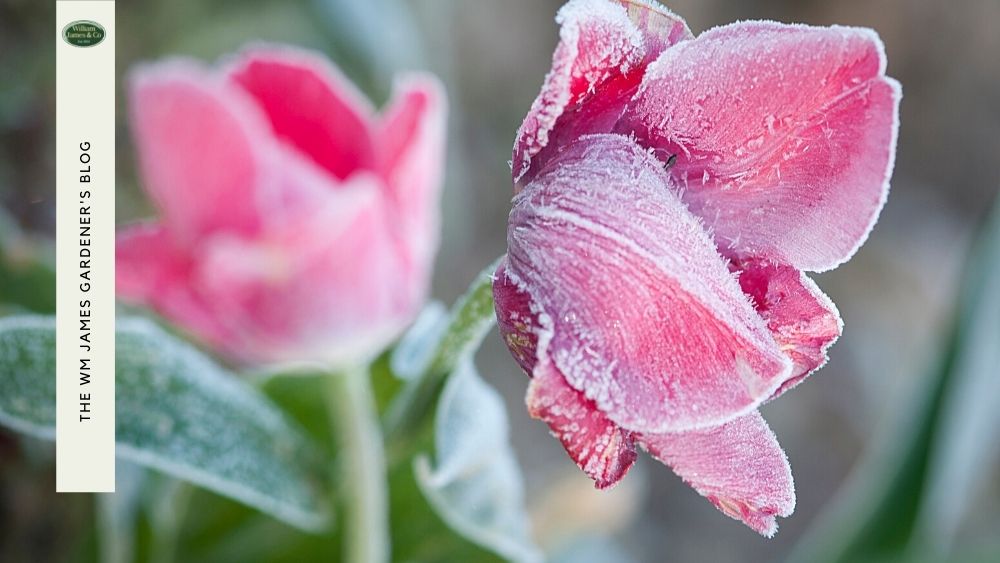
With the cold weather setting in, it's time to start thinking about how to frost-proof your garden through the winter.
We’re going to share our hacks, tips, and advice on how to protect your plants from frost, so once spring arrives, your garden will be thriving and ready to bloom.
Key Points
- Protect soil and roots by applying a thick layer of mulch to insulate plants from freezing temperatures.
- Use horticultural fleece or plant jackets to shield vulnerable plants from frost, while allowing light and moisture through.
- Move potted and tender plants into sheltered areas, greenhouses, or near south-facing walls for extra warmth.
- Avoid frost pockets by choosing raised beds or well-drained planting areas that prevent cold air from settling.
- Treat frost damage by pruning affected areas, using fertiliser to encourage regrowth, and waiting until spring before removing.
Without making important adjustments to your winter garden (or early spring and late autumn for that matter!), you may end up with some sad-looking plants once the weather has passed.
If you're tired of entering spring with damaged plants, keep reading to learn more about protection for plants in winter.
Shop our must-have plant protection equipment today (with free UK delivery available*!)...
Signs of Frost Damage in Your Garden & What it Does to Your Plants
Frost is a plant's worst enemy, as it causes irreparable changes — both physical and chemical.
Plants are made up of cells filled with watery sap that circulates nutrients around them. When these cells freeze, they can rupture and burst, permanently damaging your plants' cell walls.
This results in frost burn, which causes browned or blackened leaves on both evergreens and deciduous plants.
Here are some more signs your plant has been damaged due to frost:
- Discoloured foliage (black or brown)
- Death
- Collapsed stems
- Few or no fruits forming on trees
- Spotting on leaves
The Cause of Frost Damage
Frost is simply a deposit of white crystals on the ground or other surfaces, formed when water vapour in the air changes directly to ice.
Typically, frost occurs between October and March in the UK.
However, any time the temperature drops below freezing and there's a wind chill factor involved, you should protect your plants from frost.
The key thing about frost is that the colder it gets, the more damaging it can be. Plants will start to feel the impact of a freezing night and need protection. At lower temperatures, the damage increases exponentially.
And if you live in an area that never gets cold enough to cause plant damage (please let us know where so we can visit!), that doesn't mean you shouldn't protect them from the cold.
Even if temperatures don't drop low enough for frost to form, low temperatures can still damage plants by slowing down their growth and making them more vulnerable to disease.
Our plant windbreak netting is ideal for protecting your garden from colder conditions.
It's lightweight and flexible, so it can create a protective barrier against cold winds without blocking out too much light. Perfect for milder winters.
How to Protect Plants from Frost
Protection for plants in winter should be at the top of the priority list for October gardening jobs. It's better to always be one step ahead of the frost.
There are many different ways to protect your garden plants from frosty temperatures over the chilly season.
Before we talk about plant covers, jackets, and fleeces, here's what we recommend doing to your garden to help fight the frost.
Cover Soil With Mulch
The first step is to ensure the soil around plant roots doesn't freeze.
Freezing soil creates expansive pockets of water or frost pockets, which drain energy and nutrients away from vulnerable root systems, causing permanent damage.
This isn't usually a problem for plants in small pots, but for larger plants, like trees, you'll need to protect the soil from freezing by covering it with a thick layer of mulch — this will help insulate the root system and ground.
Secure the mulch in place with stones or plant pots to prevent it from being blown away by heavy winds.
Carefully Consider Planting Positions
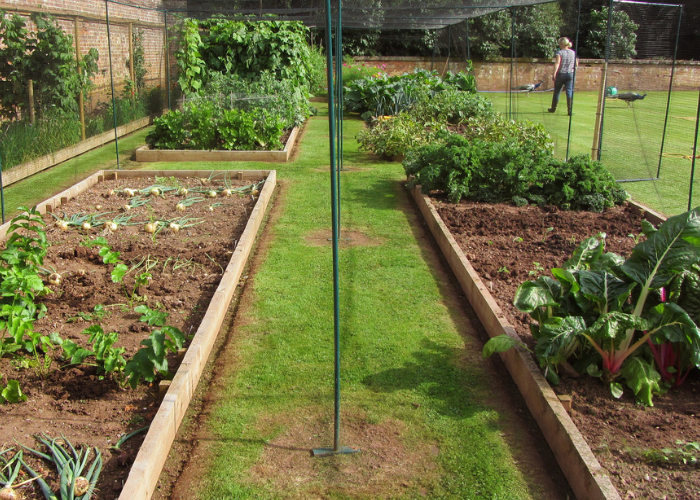
You'll have to think about this a little before winter, and in fact, before you plant your plants.
You need to avoid frost pockets, and if your garden is susceptible to them, consider planting in raised beds or cold frames.
You should also consider the type of plant you want to grow.
For example, plants that are more tender and vulnerable will need to be planted in a spot that receives a lot of sunlight to help them through the winter.
The RHS suggests putting plants near a south-facing wall, which will provide much-needed winter protection.
Move Your Container-Grown & Indoor Plants
When the temperature drops, we recommend moving your indoor plants away from windows.
If this isn't possible, you can cover windowsills with plastic sheets or newspapers, which will help prevent damp and frost on the window panes.
Container-grown plants (if easy to move) can be taken to more sheltered parts of the garden as a first port of call. You'll probably want to use some sort of cover, too, but this is a good start.
Tender, vulnerable plants can be moved to a greenhouse if you have one, but you should make sure at least ten centimetres of warm air is above the plant to protect it from frost damage.
Apply Nitrogen-Rich Fertilisers

The RHS suggests using a nitrogen-rich fertiliser late in the season to stimulate the growth of more vulnerable plants. This will help those plants be less susceptible to the damage caused by frost.
Consider Your Trees
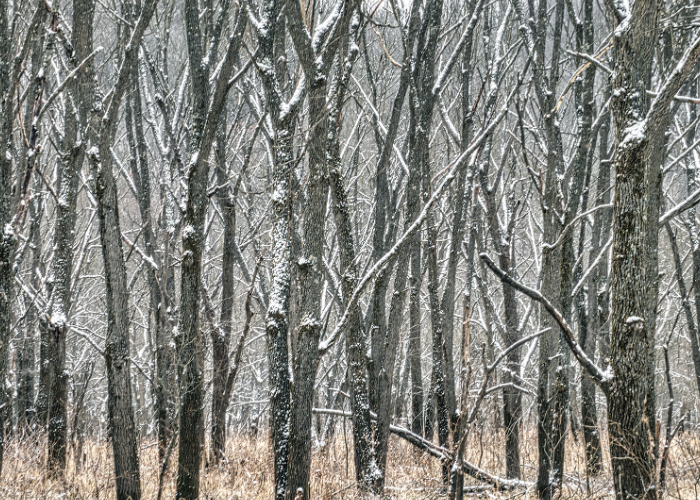
Trees might need a bit more help through the winter. The most common problems are frost cracks or sun scalds.
Frost cracks occur when the sap in a tree's trunk freezes and expands, causing the bark to split, and sun scalds happen when the sun heats the bark during the day, causing it to expand. When the temperature drops at night, the bark contracts and can crack.
To prevent these issues, you can heavily mulch and water before the risk of frost occurs, and place a stake in the ground to support trees which may snap under the weight of frost.
You can also cover your trees, but we'll get onto that later.
Read More on Protecting Your Trees
Covering Plants for Frost
In an outdoor garden, covering your plants, as well as taking other frost-protecting measures, will be essential to keeping them healthy and happy.
If your garden is susceptible to heavy bouts of frost, protect against it by covering up vulnerable plants overnight. This will prevent them from sustaining severe damage.
Below are some of the most common ways you can cover your plants throughout the winter.
| Plant Cover Method | Explanation |
| Horticultural Fleeces, Fleece Tunnels & Plant Jackets | The best way to protect from frost damage is to use our plant frost jackets, horticultural fleeces, and fleece tunnels. These protect your garden from very low temperatures, are simple to use, and easy to move around depending on where they need to be used, whether around trees, over veggie patches, or over potted plants. |
| Thick Sheet of Newspaper | You can use this on small plants or pots. If you opt for this method, protect it from the wind so it doesn't get blown away. |
| Mesh Netting | Some types of garden netting, like our green windbreak netting, can help protect plants from frost damage by creating a barrier between the plant and the cold air. These nets have a close mesh, which protects plants from cold winter winds. When using netting to protect plants from frost, make sure to remove it once the risk of frost has passed, as it can restrict the plant's growth. Netting with a large mesh will not work to protect from frost. |
| Cold Frames | A cold frame can help create a warmer environment for your plants to grow in, while giving them optimum sunlight and ventilation. It's also great for displaying your beautiful blooms. |
| Cloches | Cloches are a type of cover that can be used to protect plants from frost. They come in various sizes and materials, such as glass or plastic, and can cover individual plants or entire rows of crops. While effective at protecting against frost, cloches should be removed during the day to prevent overheating and potential damage to the plants. |
Will Cardboard Boxes Protect Plants from Frost?
Cardboard boxes can protect plants from frost if they're large enough to cover the entire plant.
This simple method helps retain heat and shield plants from cold temperatures, but it isn't completely reliable, as it can blow away if you don't weigh it down adequately.
You should also remove them once the risk of frost has passed, or you'll be depriving your plant of essential sunlight and proper airflow.
Cardboard boxes also become much less effective once they get wet, so you'll probably need to replace them after each use.
Instead, we recommend garden fabric, which has been designed and manufactured to withstand harsh weather conditions while protecting plants.

Shop the Best Garden Fabric for Winter
How to Treat Your Frost-Damaged Plants
Not all damage caused by frost is a death sentence for your plants. Some are rather resilient and just need a little TLC to get them back to normal.
So, if frost has damaged your plants, or you just want to know what to do if the damage becomes inevitable, here are some of our top tips for revitalising a frost-damaged plant:
- Prune the damage: If the risk of frost has passed and only part of your plant has been damaged, use a sharp, clean set of pruners, like the Burgon & Ball Bypass Secateur, and remove the damaged leaves.
- Use a good-quality fertiliser: To encourage strong regrowth, use a general-purpose fertiliser.
- Check soil: Frost can push new plants out of the ground, so check the surrounding soil and pat it down evenly to ensure everything is secure.
- Remove roots: If the whole plant has died, lift the root out of the ground and plant somewhere else if possible. The plant may not grow, but it's worth a shot.
- Be patient: Even if most of the plant has died or been damaged, leave it until the following spring to see what regrowth occurs from the live parts. Once spring is in full force, you can prune away the dead, damaged parts.
Conclusion: Properly Protecting Your Plants from Frost
Keeping your plants shielded from frost and snow is crucial to maintaining their health and longevity. You've worked too hard to grow them to let them get taken down by frost.
By investing in protecting your plants and making adjustments throughout the winter and colder ends of spring and autumn, you can prevent a wide range of issues.
From frost burn to root injury and halted growth, you can protect your plants heading towards irreparable damage, even death, if you make the effort to deter the frost.
With our tips, tricks, and product recommendations, you can have a robust and thriving garden throughout winter and into the growing season. So be sure to bookmark this page ahead of the next frost!
Keep your plants warm and cosy this winter, and shop our range of garden fabric and other frost protectors online today.
Free UK delivery is available *when you spend over £100!
If you have any questions about how to protect your garden from frost, please don’t hesitate to contact us. With over 60 years in the horticultural industry, we know a thing or two about keeping your garden safe through winter!
FAQs
Do Frost Blankets Really Work?
Yes! A frost blanket or plant jacket protects your lovely plants against harmful frost, while letting light and moisture filter through.
They are great at protecting young plants, which are not yet hardy to the cooler temperatures of a UK winter.
Can You Use Bubble Wrap to Protect Plants from Frost?
Bubble wrap does a similar job to a horticultural fleece, but it hasn't been made or designed to specifically protect plants from frost, which is why we'd always recommend a fleece.
This is because they are specifically made to keep plants warm in cold climates and provide far better breathability than bubble wrap, which can sometimes trap air and stop circulation, potentially harming the plant.
Is 4 Degrees Cold Enough for a Frost in the UK?
Actually, yes, it can be.
While it's common for people to think the temperature needs to be zero degrees or below, the Met Office explains that if air temperatures fall between zero and four degrees on a night with little cloud or wind, there may be a frost.
If you're worried about your plants over winter, you should keep a keen eye on the forecast and make adjustments as needed.
What is the Best Cover to Protect Plants Against Frost?
There are many ways to protect your precious garden plants against frost, but one of the most effective covers is a plant fleece.
The close-woven mesh material of a horticultural fleece is lightweight and breathable, allowing water to pass through the fabric while protecting the plant from harmful cold temperatures.
If you want to try one out in your frost-prone garden, our range of horticultural fleeces is available here.







